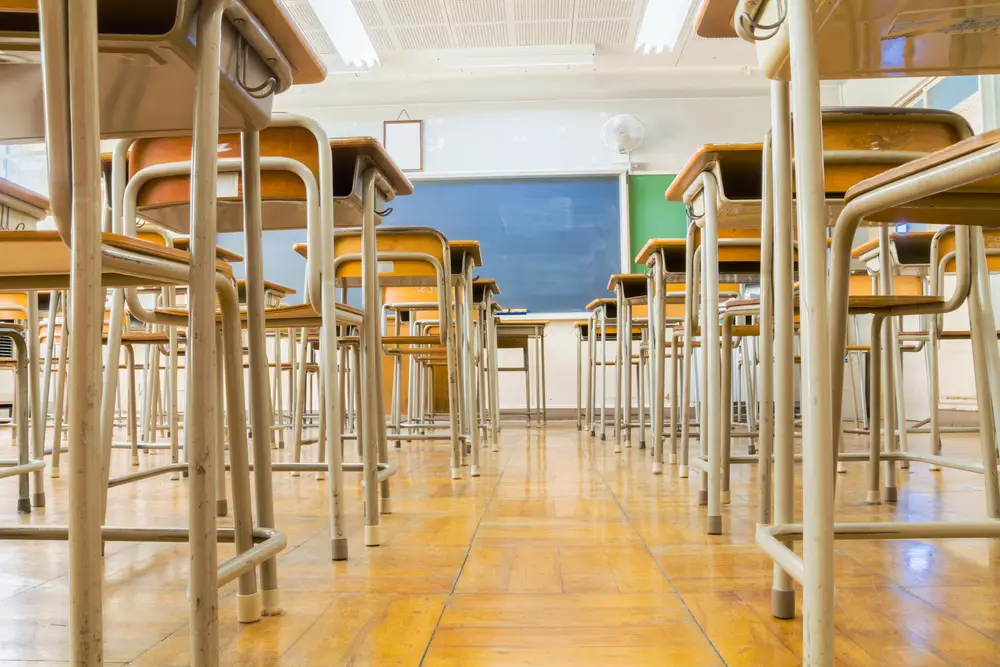It’s back to school time again, and each year many children get a new backpack to carry supplies, books, and homework. These carry-all backpacks often reflect the personality of the child, with many adorned with super heroes, princesses and more than a few Angry Birds.
 While this efficient carrying case has been around for many years and has been used by millions of students both old and young, back experts such as Texas Back Institute physician Dr. Rey Bosita have noticed a problem with backpacks. They’re too heavy for some kids, and can cause long-term serious back problems.
While this efficient carrying case has been around for many years and has been used by millions of students both old and young, back experts such as Texas Back Institute physician Dr. Rey Bosita have noticed a problem with backpacks. They’re too heavy for some kids, and can cause long-term serious back problems.
We spent a few minutes with Dr. Bosita to get some guidelines on the proper size and use of backpacks. More on this later.
Backpacks Have a Colorful History
Backpacks, in one form or another, have been around since early humans used animal skins to carry meat from hunting trips. Just as with the school kids of today, these packs allowed prehistoric hunters to use the strong muscles in their backs to carry much more game for longer distances than if they were carrying it in their arms alone.
Historians note that the term “backpack” was coined by Americans around 1910; however, before it was known as a backpack, Europeans (specifically the Germans) called this carry-all a “rucksack,” which is a shortened version of the phrase “der Rucken” – German for “the human back.”
Up until the 1950’s, the backpack was primarily used for hunting and military purposes. These early versions were made of rugged materials and very heavy to carry. All of this changed when hiker Dick Kelty realized backpacks could serve a valuable function to the participants of his sport. He began experimenting with creating packs made of lighter materials and more compact designs. He also changed the weight distribution of the backpacks – by putting the skids of the pack in the back pockets of his hiking pants – allowing the hips to carry more of the load.
With this change, anyone who needed to carry several items while they were walking could pack these in a backpack and be on their way. It didn’t take long for parents and students to discover these same, light-weight backpacks were ideal carrying cases for schoolbooks and homework papers.
The Problem with Backpacks
For all of its efficiency, the modern backpack has its detractors, some of whom are back specialists. In an article published in 2012 in the New York Times, it was noted that “heavy backpacks don’t just zap children of energy that might be better used doing schoolwork or playing sports. Lugging them can also lead to chronic back pain, accidents and possibly lifelong orthopedic damage.”
In this article on the dangers of backpacks for kids, the federal Consumer Product Safety Commission calculated that “carrying a 12-pound backpack to and from school and lifting it 10 times a day for an entire school year puts a cumulative load on youngsters’ bodies of 21,600 pounds – the equivalent of six mid-sized cars.”
In a 2012 report in the “Archives of Disease in Childhood,” researchers in Spain assessed the backpacks and back health of 1,403 pupils, ages 12 to 17. More than 60 percent were carrying packs weighing more than 10 percent of their body weight, and nearly one in five had schoolbags that weighed more than 15 percent of their own weight.
This study found that “1 in 4 students said they had suffered back pain for more than 15 days during the previous year; scoliosis – curvature of the spine – accounted for 70 percent of those with pain. The remaining 30 percent had either low back pain or contractures – continuous, involuntary muscle contractions.” Girls faced a greater risk of back pain than boys, and their risk increased with age.
Clearly, there is a potential problem with backpacks and kids. In many cases, they are either too heavy for the size of the child or they are being worn by the child incorrectly. We spoke with Dr. Rey Bosita, a spine specialist with Texas Back Institute, to get an idea on the “dos and don’ts” for backpacks with kids.

Dr. Bosita noted pain often results when the weight of the pack pulls children backward, prompting them to bend forward or to arch their backs to keep the pack centered. These positions make the back muscles work harder and increase pressure on vertebrae on the discs between them.
If the child has to lean forward or seems unsteady when walking with a loaded pack, it’s too heavy. This can lead to poor posture and shoulder pain. Neck pain can also occur when the child is forced to look up from this position.
No parent or teacher wants a child to be injured by a backpack which is too heavy. So, what should be done to correct this situation? Dr. Bosita has some ideas.
Tips You Can Use for Back Safety and Backpacks
“The first thing we should look at is how the backpack fits the child and how he/she is standing while wearing it fully-loaded. The child should be standing straight up – with shoulders back. The backpack should be positioned in a manner that allows it to rest against the child’s back, straps a little tighter, so that the pack doesn’t sag too low,” Dr. Bosita notes.
Another important consideration for back safety is the weight of the backpack. What is the correct weight for a child’s backpack and how does a parent determine the weight of the pack? Dr. Bosita says, “The easiest way to determine the acceptable weight of the pack is to get the family scales out and weigh the child without his/her backpack. The weight of the backpack should be no more than 10 to 15 percent of the child’s weight. Therefore, if the child weighs 50 pounds, the backpack should not weigh more than 5 to 7 pounds.”
“Remember, everything adds weight to the backpack, including the pack itself, Dr. Bosita notes. “It’s a good idea to check the backpack weight with all of the materials connected to the pack (water bottles, knick knacks) and the books and school supplies being carried in the backpack (library books, binders).”
For the complete video of Dr. Bosita’s tips on backpacks, just click here
Pack Only What’s Needed
When given the chance, younger children will stuff as many things as possible in their backpacks, much of which is not related to school work. Parents should take a minute each morning and afternoon to inventory the items being transported to and from school. If there are toys, games, handheld computer games, pet rocks, frogs and other non-academic items being packed in the bag, remind the child that these things should be left at home.
If he or she disagrees about the contents of the backpack, have a Plan B. Just tell them that you want them to grow up straight and tall and a heavy backpack might keep this from happening. This has the advantage of being the truth.
And if this fails, reward them with a treat if they keep the back pack light.


